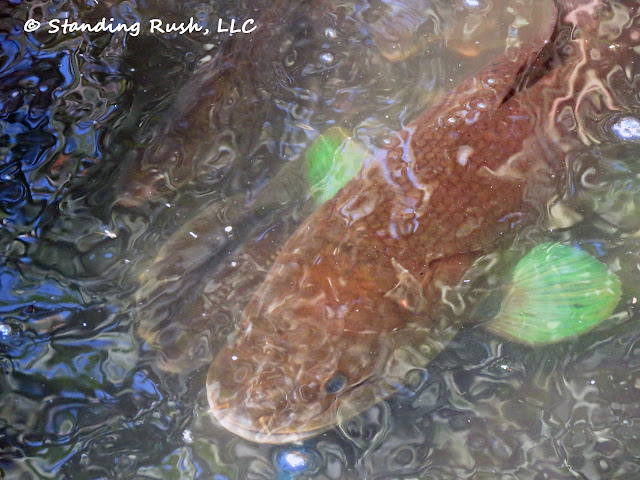 |
| A closeup may be attractive, but this plant is trouble |
Parsley, celery, carrots, anise, fennel, cilantro, and POISON hemlock – as they say, “One of these things is not like the other.” All are members of the carrot family (Apiaceae, formerly known as Umbelliferae), and all but one are – not only non-toxic – but edible.
One significant challenge comes when poison hemlock, an arguably visually appealing plant, is misidentified. If ingested, as few as a handful of leaves – or any of the other anatomy, including the seeds and roots – can incapacitate an otherwise healthy adult in a matter of seconds. The potent toxin causes permanent paralysis of the muscles, including those used for breathing. Remarkably, this plant is truly lethal (ask Socrates), and there is no known antidote.
Another significant challenge is that beyond the extreme toxicity of this outwardly innocuous carrot-like impostor, poison hemlock joins a growing list of invasive plants as a true nuisance in the marsh community. Europe was home originally, but now the plant is increasingly common along roadways, railways, field edges, disturbed sites, wet areas, streambanks, pastures, and even ag land in much of the United States. According to the Ohio State University Extension program (2012), "The population of poison hemlock along field edges, in fence rows, around barn lots, and now even growing throughout hay fields seems to have reached new proportions," in the state, and its versatility is making it a rampant invader in Ohio (and beyond).
When I first sat down to write this post, I thought I’d have to commission Roy to procure some photos. There is no shortage of photo-documentation online, but I wanted images from our specific property. What I found in looking back at just about any landscape shot we’ve taken in the last three weeks is that poison hemlock is at least present just about everywhere there is relative high ground. It loves the dikes, particularly in areas where cool season grasses are thin and/or Phrag is or was recently prevalent.
We can attest that this plant readily grows in excess of 10 feet tall in moist, fertile conditions. A subtle side note from an Illinois source says it “likes calcium-rich substrates.” We fit that bill, too – our marl-rich soils certainly qualify.
To confuse things further, poison hemlock is often mistaken for another noxious and toxic invasive plant called giant hogweed. It exhibits many crude similarities in form and is one that is also spreading rapidly across Ohio.
Although poison hemlock is more known for poisonings as a result of ingesting (particularly by an unsuspecting cow), I've found evidence that the plant’s natural oils may absorb through the skin. According to the University of Illinois Extension, simply handling the plant seldom causes a toxic reaction in humans, but “ingesting” it even through the eyes or open wounds can cause poisoning. For this reason, I’m now in the habit of wearing a mesh face shield and safety glasses when I’m encountering the plant with our bladed power trimmer.
 |
| Where's Waldo? Can you find the swallowtail caterpillar happily munching away on this hemlock? (click to enlarge) |
I just received the bill for our second mowing of the season, and couldn’t help but notice the note added IN BOLD to the invoice, “HEMLOCK BECOMING A PROBLEM” – Joe is being kind; that’s an understatement. We are trying to mow and trim more often so that grasses might outcompete. Mowing after the hemlock has bolted and before seed set will prevent seed production. But because this relative newcomer hasn't historically been prevalent enough to be problematic, we're still developing a more comprehensive management strategy.
While poison hemlock can be partially managed by mowing and tilling, it seems the most effective control approach involves properly timed applications of selective post-emergent herbicides. Flowering begins in early to mid-May and really seems to hit its stride in June on our property. It is a prolific seed producer, so applications of herbicides made now should reduce seed production.
Based on OSU Extension recommendations, there are several herbicide options. Crossbow, Banvel and 2,4-D are all thought to be fairly effective on small poison hemlock in the spring. Taller plants may can be controlled with glyphosate (Roundup) during the summer months, so we may start experimenting with selective spraying soon. Being a biennial, however, poison hemlock is perhaps most effectively controlled late in the fall. We'll be experimenting with a variety of tactics, and we're certainly open to suggestions! Eventually, I hope to be able to report back with some success stories.








